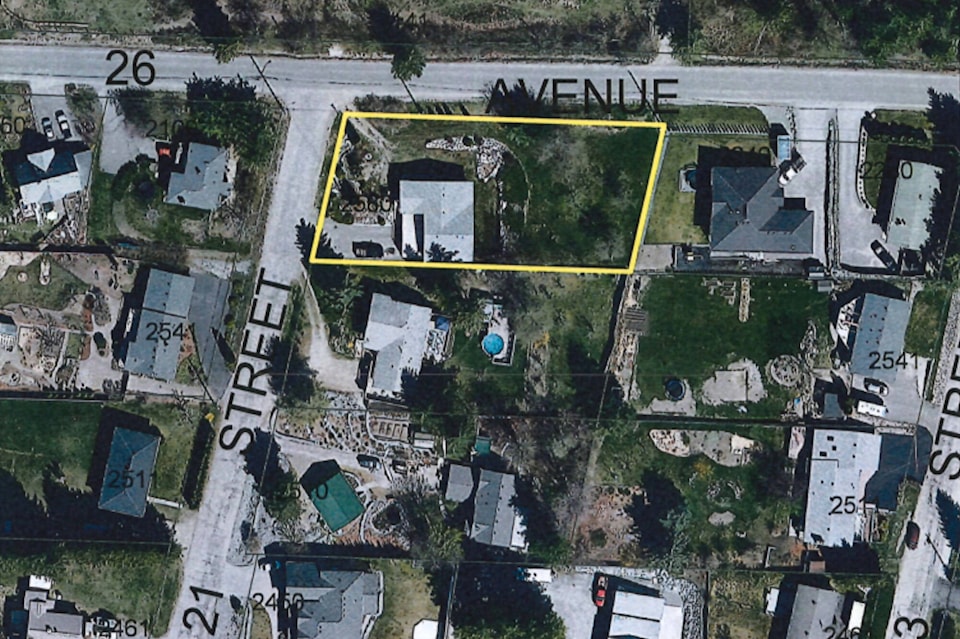How much should a property owner subdividing one lot into two have to contribute to water, sanitary sewer and storm main upgrades to the streets involved?
City council members grappled with this question during the city’s April 19 development and planning services committee meeting.
The property in question is just east of the Appleyard subdivision and north of the Cress Creek Trail at 2580 21st St. NE.
Alistair Waters with Lawson Engineering Ltd., applying on behalf of owner Aaron Hansen, told the meeting that he appreciated city staff’s recommendations and the suggested reduction in cash contributions.
He did, however, reiterate the wish to have the city waive the full requirement for the storm main installation rather than just 50 per cent of the cash contribution.
Waters noted there is no storm main anywhere along 26th and it would be coming up from Lakeshore.
“Larger parcels to the north would be more well-suited to take on the costs incurred with extending the storm main,” he said noting the costs could make it unfeasible for the owner to build a house for himself.
The initial variance request from the applicant to the city was in three parts: to waive a water-main upgrade from 100 millimeters to 150 mm on 26th Avenue NE and 21st Avenue NE; to waive the sanitary main upgrade from 150 mm to 200 mm on 21st Street NE; and to waive the required 250 mm storm main installation on 26th Avenue NE.
Instead, staff recommended approving only the waiving of the sanitary main upgrade; reducing the minimum water-main upgrade contribution from 100 per cent ($124,513) to 50 per cent ($62,256); and reducing the storm main installation contribution from 100 per cent ($94,222) to 50 per cent ($47,111).
Read more: 20-unit residential complex proposed for Salmon Arm’s South Broadview area
Read more: City grants development permit for residential complex by Salmon Arm RCMP detachment
Council members approved all three recommendations at a total cost of $109,000 at the planning meeting, but not without considerable discussion.
Coun. Chad Eliason clarified if the cash contribution will go into reserve and sit there until storm water services are provided on that road, and was told yes.
Coun. Tim Lavery pointed out while it’s a high cost, preparations for flooding must include storm water installations. Coun. Sylvia Lindgren agreed, adding council has had discussions about short stretches with no sidewalk because the adjacent property hasn’t been developed.
“We still have chosen not to finish the sidewalk as it’s not the responsibility of the entire community to put in one block of sidewalk in front of one property.”
She said the main might not be important now but it will be later.
The cost is a small portion to pay compared to what a development across the road would pay to extend the main to Lakeshore, she said.
Coun. Kevin Flynn said he struggles with a two-lot subdivision having to pay for a storm drain installation that might happen 10 years from now, when potentially larger subdivisions on the other side of 26th Avenue NE could pay.
Council members voted on the three staff recommendations separately, with Flynn alone in opposing the storm water one. The development variance permit application will now go to the April 25 council meeting for a hearing and a vote.
newsroom@saobserver.net
Like us on Facebook follow us on Twitter and subscribe to our daily newsletter.
